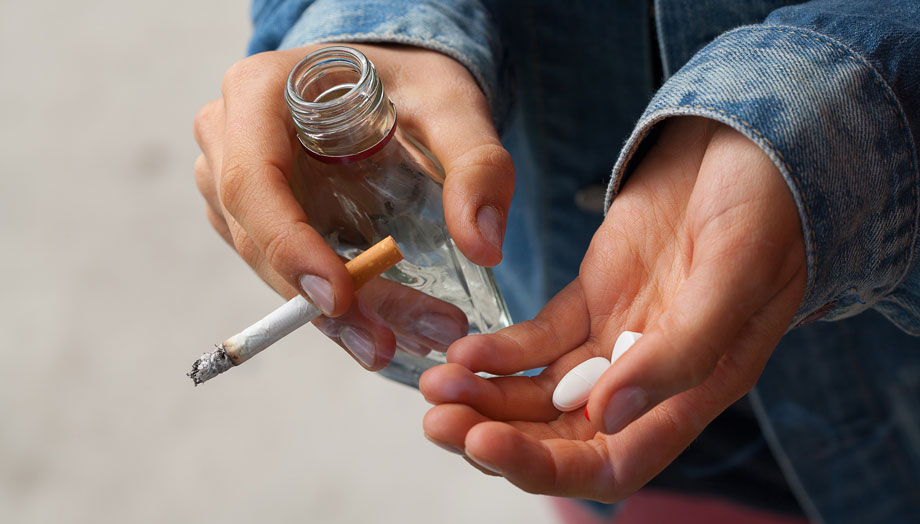Navigation auf uzh.ch
Navigation auf uzh.ch

Polydrug use – particularly of alcohol and cannabis – is no marginal phenomenon among teenagers and young adults. Even though this combination holds some risks, e.g. a greater risk of accidents, other forms of polydrug use are more dangerous. The fatalities of young people recorded since 2018 were presumed to be attributed to the consumption of several different medication or medication combined with alcohol. The main medications concerned are benzodiazepine (primarily Xanax®), cough medicine containing codeine, and other medication containing opioids.
In Switzerland, there has been a lack of substantiated data relating to adolescent polydrug use. The Swiss Research Institute for Public Health and Addiction (ISGF), an associated institute of the University of Zurich, wants to close this gap with an ongoing study. Led by Corina Salis Gross, the researchers are investigating which substances young people combine with each other, what the motives behind and the contexts of their polydrug use are, and which risk minimization strategies they use. To answer these questions, an online survey is being conducted with 14- to 20-year-olds who regularly use multiple drugs. In addition to this survey, the researchers are conducting focus groups with teenagers and workshops with experts.
According to experts, young people are usually unaware of the risks of polydrug use. This corresponds to their own statements that their polydrug use is often spontaneous, and there is therefore no time to gather information beforehand. Equally, a few teenagers appear to be well informed, although the information sources they mention (e.g. YouTube) do not always provide factual information and sometimes the information is inaccurate.
Specialist organizations advise consumers generally to avoid polydrug use because the interactions between the substances taken are difficult to assess and therefore highly risky. The greater the number of substances taken, the greater the risk of these kinds of interactions. However, interim evaluations of the online survey show that the combination of more than two substances is not uncommon. For instance, around half of the survey participants stated that usually when they take more than one drug, they combine more than two substances at the same time. Tranquilizers and sedatives and/or pain relievers and cough medicine are also often consumed together with more than two substances.
To reduce the risk, specialized organizations recommend testing substances from the black market. But for young people, these kinds of drug checks are associated with various barriers. These include the fact that many of these services can only be used from the age of 18, that they are only available in a few towns, and that they have restricted opening times (e.g. weekday evenings). For prescription medication, young people also usually consider testing to be unnecessary if the medication is sealed in blister packs. The medication is considered to be clean and safe, even though these kinds of seemingly regularly packaged medication may be impure if they have been obtained on the black market.
Three quarters of the current study participants to date reported knowing what to do in an emergency after polydrug use (e.g. call an ambulance). Equally, around three fifths of those surveyed assumed that they would recognize an emergency such as overdose. However, several experts said that in some cases young people avoid calling for help even in critical situations because of their fear of blue-light organizations. This includes, for example, fear of repressive consequences and being concerned that they would have to take on the costs (e.g. for the ambulance journey). Often, all people in a peer group are intoxicated, which can also make a proper and timely response to an emergency difficult.
The participants of the online survey usually combine substances because it’s fun and it makes them feel good. Several adolescents also mix substances because it helps them to feel relaxed and less shy and alleviates anxiety or other negative feelings. This polydrug use to regulate emotions is considered particularly problematic by several specialists. Accordingly, adolescents and young adults who use multiple drugs to self-medicate are making efforts to reduce their consumption. For these adolescents in particular, it is important that they receive access to professional help.